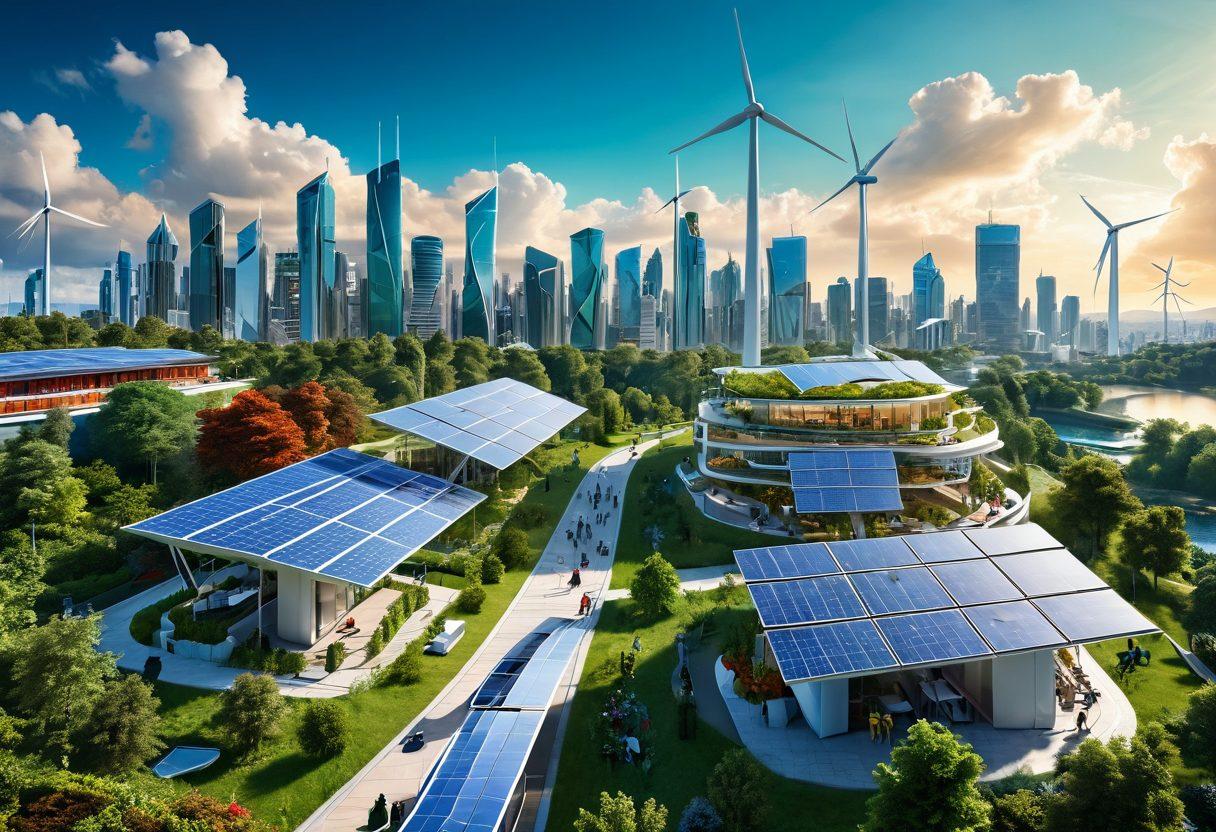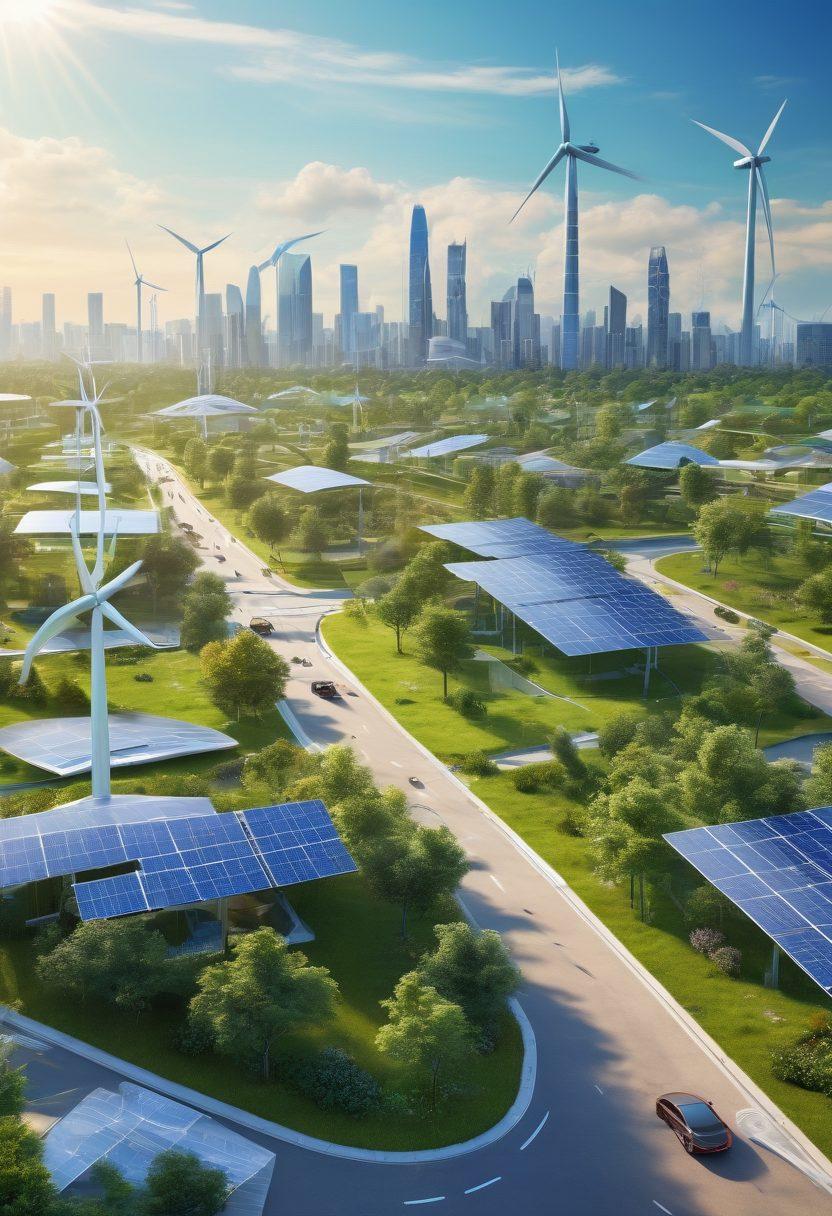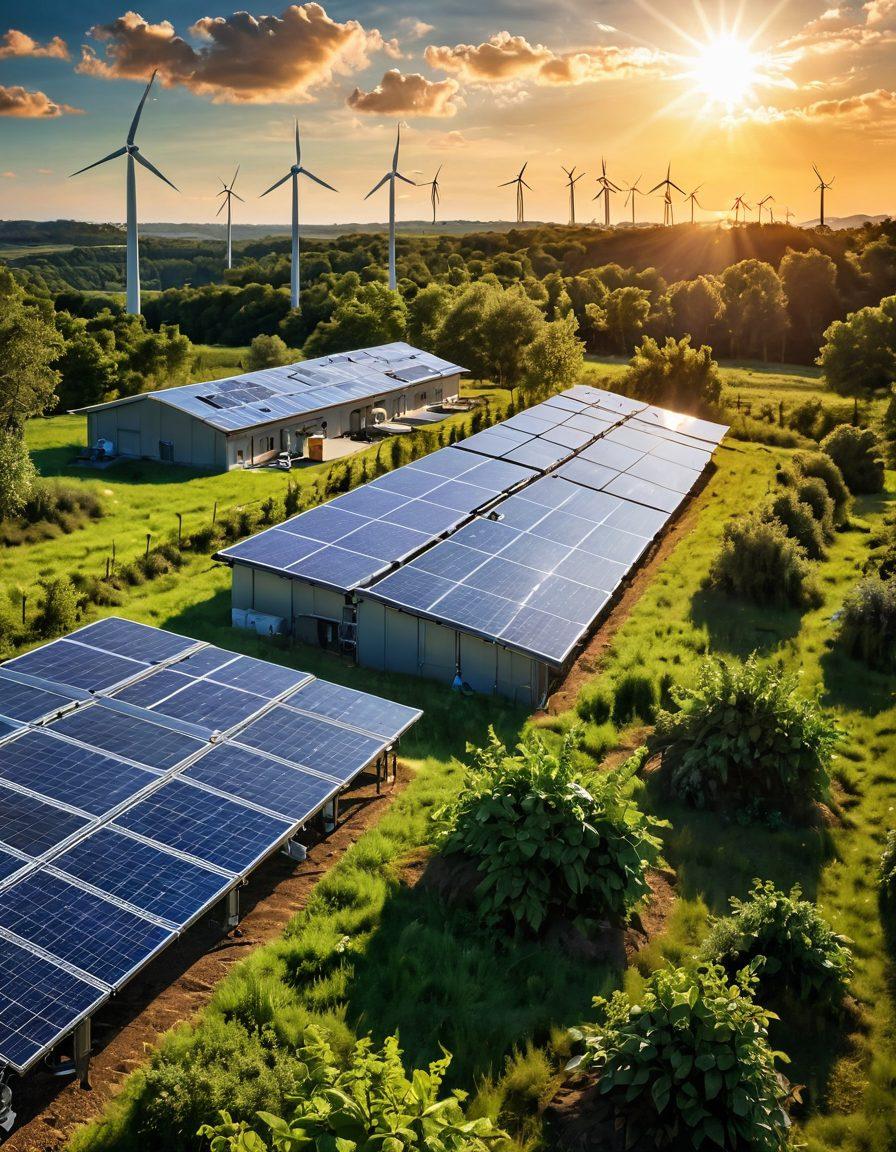Harnessing the Future: Innovative Strategies for Sustainable Power Generation and Distribution
Imagine a world where our daily lives are powered by the sun, the wind, and other natural forces, creating a cleaner, healthier environment for future generations. This vision is no longer mere wishful thinking; it is the foundation of a revolution in power generation. As we explore the role of renewable resources in achieving a sustainable future, it becomes increasingly clear that the time for energy transition is now. Can we really imagine a world free from the shackles of fossil fuels? The answer is a resounding yes, as innovative strategies for sustainable practices take shape around us!
At the heart of this revolution lies the concept of renewable resources. Solar energy harnesses the power of the sun through cutting-edge energy technology, transforming sunlight into electric power. Meanwhile, wind energy spins large turbines to convert breeze into energy. Biomass energy leverages organic materials, from plant waste to animal manure, to create eco-friendly energy alternatives. This blend of alternative energy sources not only helps in reducing our carbon footprint but also supports energy distribution methods that prioritize environmental sustainability. Have you considered how your own energy consumption contributes to this transition?
As cities and communities around the globe increasingly adopt smart grid technologies, energy optimization and conservation become feasible for consumers and businesses alike. Smart grids allow for real-time communication between energy systems, enabling more efficient energy distribution and minimizing waste. This results in a dynamic way to manage resources while giving consumers the tools they need to make informed decisions about their energy use. What if you could monitor your energy consumption patterns and adjust them for maximum efficiency? The future is here; let’s embrace it!
However, the transition to renewable resources and sustainable practices requires a commitment from everyone—government entities, companies, and individuals. Energy policy plays a crucial role in shaping regulations that support low-carbon energy initiatives. Governments must prioritize investments in renewable technology to encourage innovation and accessibility. So, how can you contribute to this movement? Begin by exploring renewable energy options for your home and advocating for energy-efficient practices that help foster a healthier planet. Every little step counts!
In conclusion, revolutionizing power generation through the integration of renewable resources is not just a choice; it is a necessity. From solar and wind to biomass energy, each alternative energy source offers unique benefits that align with the principles of sustainable development. It is essential that we engage in this ongoing conversation about energy conservation and continue exploring solutions that foster a resilient energy future. As we take bold steps toward greener energy systems, let’s remind ourselves that the choices we make today will echo in the lives of generations yet to come. Together, we can harness the future!
Smart Grids and Eco-Friendly Practices: Pioneering the Next Energy Transition
Have you ever gazed up at the clouds and wondered what power truly sustains our lives? The answer lies not only in modern electricity systems but also in the innovative practices that harness energy generation in the most eco-friendly way possible. Welcome to the era of smart grids and sustainable practices, where technology and environmental consciousness converge to pioneer the next energy transition. Our journey through the world of energy begins here as we explore how these strategies are set to redefine our future power landscape.
Smart grids are revolutionizing how energy distribution operates, marrying technology with efficiency. Imagine a world where your smart thermostat communicates with the electrical grid, adjusting your energy consumption in real-time based on renewable resources like solar and wind energy. This isn’t just a dream — it’s already happening! Smart grids optimize energy systems by allowing for the seamless integration of alternative energy sources, cutting down on the carbon footprint associated with traditional power generation methods. Isn’t it remarkable how we can harness the sun and wind to achieve energy optimization?
As we dive deeper into eco-friendly practices, let’s remember the compelling reasons behind them. The cumulative effect of our choices can lead to a significant reduction in carbon output. How many times have you thought about the energy conservation practices in your own home? Simple actions like investing in energy-efficient appliances or supporting local biomass energy projects can massively contribute to reducing environmental degradation. This active participation taps into the consciousness of sustainable practices that empower individuals and communities to play a pivotal role in this energy transition.
The stories of successful energy policies around the globe illustrate the potential of low-carbon energy. Countries are not merely adapting; they’re transforming. Take Denmark, for example, which generates a staggering 47% of its electricity from wind energy. It's initiatives like these that not only inspire but serve as a blueprint for how we can embrace renewable resources. When we think about environmental sustainability, we should ask ourselves — how could local governments in our regions adopt similar innovative strategies?
In conclusion, the future of energy rests on a foundation of innovation, collaboration, and eco-friendly consciousness. As we march forward, embracing smart grids and sustainable energy practices, we are not only ensuring a reliable supply of electric power but also nurturing a healthier planet for generations to come. The next time you brush your teeth, consider how much energy you use and how you can make a difference. The next energy transition is more than just a shift; it's a collective awakening that invites each of us to play a part in a cleaner, sustainable future.
From Solar to Biomass: Exploring Innovative Strategies for Efficient Energy Distribution
In an age where the significance of eco-friendly energy solutions is more pronounced than ever, we find ourselves at a crossroads of innovation and necessity. Imagine a world fueled by solar energy, wind energy, and even biomass energy in a seamless energy distribution network. As climate change accelerates, it becomes increasingly crucial to explore innovative strategies for power generation that not only meet our energy needs but also adhere to sustainable practices. How can we transform our approach to energy systems to create a brighter future for generations to come?
The shift from conventional fossil fuels to alternative energy sources is not just a trend; it's an urgent requirement for environmental sustainability. By embracing renewable resources like solar energy and wind energy, we can significantly reduce our carbon footprint. The story of a small town that transformed its energy policy to rely on solar panels illustrates this beautifully. With a few dedicated citizens and a vision for a low-carbon energy future, they harnessed the sun’s power, dramatically lowering their dependence on traditional energy sources. What could your community achieve by embracing similar sustainable practices?
Energy technology is advancing at a rapid pace, and the advent of smart grids is revolutionizing energy distribution and optimization. Picture a network that seamlessly integrates various forms of energy production, allowing electric power to be distributed more efficiently and effectively. Smart grids are not just about convenience; they enhance energy conservation efforts and enable real-time adjustments based on consumption patterns. The critical question is, are we ready to embrace this transition, and what role can we play in advocating for smarter energy systems?
Biomass energy, while often overlooked, offers another fantastic opportunity for sustainable power generation. Utilizing organic materials such as agricultural waste not only minimizes landfill contributions but also generates energy in a way that's eco-friendly and practical. Close your eyes for a moment and visualize a farm where leftover crop materials are bioconverted into energy that powers nearby homes. This kind of synergy is the embodiment of energy optimization, demonstrating how innovative practices can pave the way for a sustainable energy future. As stakeholders in the environment, how can we encourage more widespread adoption of these practices?
Ultimately, the drive toward sustainable energy distribution requires collective will and proactive energy policies that highlight these innovative strategies for power generation. Whether it’s through supporting local solar initiatives or advocating for biomass energy projects, each action counts. The transition to a sustainable future is not the responsibility of a few; it is a shared journey that invites all of us to participate. As we explore these exciting alternatives and foster eco-friendly energy practices, let's reflect: what small step can you take today to contribute to a greener tomorrow?


